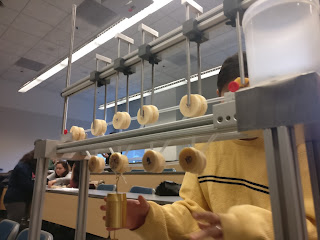Hackathon: TechTogether Boston
iOS app Last weekend, I had the wonderful opportunity to participate in Boston's largest all-female and non-binary hackathon! A group of friends and I wanted to digest as much tech and nerd information as possible, and we basically made it our mission to go to nearly every workshop session offered for two days straight. I don't know how we managed this but we did. From 5p on Friday and all day on Saturday, it seemed I bounced from one room to the next with a nap here and there. There was a workshop on rapid prototyping with AdobeXD -- which I am in love with. Then, I was able to create my first phone application during a workshop on iOS app development with Swift (it's much easier than I had imagined), followed by a workshop at 2am on Android app developmen t. For my very first hackathon-conference, I wanted to focus on skill development and learning, rather than the competition. However, seeing everyone so wrapped up in their individual designs and programming


